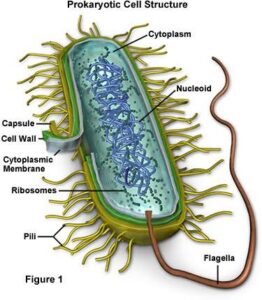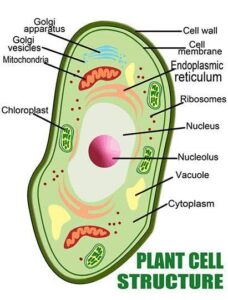Back to: MICROBIOLOGY 100 LEVEL
Welcome to class!
Hello, my brilliant learner! I’m thrilled to have you back. Today, we’re going to talk about the tiny parts that make up a cell—especially the cell wall, cell membrane, cytoplasm, and ribosomes. Think of these parts as the different sections of your house, each doing its own special job to keep everything running smoothly. Ready to see what makes a cell tick? Let’s go!
Cell Wall, Membrane, Cytoplasm, Ribosomes
Cell Wall
Imagine you live in a house with strong walls that protect you from the rain and strangers. The cell wall is like that for many cells—especially plant cells, fungi, and some bacteria. It’s a tough, rigid layer on the outside of the cell that gives the cell shape and protects it.

In plants, the cell wall is made mainly of cellulose, which is like strong fibre. It helps plants stand tall—like the tall palm trees you see around Nigeria. Bacteria have cell walls too, but theirs are made of a different material called peptidoglycan.
Animal cells, however, don’t have cell walls; they only have membranes.
Cell Membrane
The cell membrane is a thin, flexible layer just inside the cell wall (or around animal cells that don’t have walls). Think of it like the doors and windows of your house, controlling who can come in or go out. The cell membrane lets in good things like nutrients and lets out waste.
It’s made of a special layer called a phospholipid bilayer with proteins scattered through it, working like gatekeepers.
Cytoplasm
Now inside the cell, everything floats in a jelly-like substance called the cytoplasm. This is where all the other parts of the cell live and work. Imagine the cytoplasm as the rooms in your house filled with furniture, appliances, and people doing their jobs.
The cytoplasm is mostly water, with salts and molecules that keep the cell’s activities running smoothly.
Ribosomes
Inside the cytoplasm, there are tiny machines called ribosomes. These are the cell’s protein factories. Proteins are very important—they build and repair the cell, help it grow, and carry out many jobs.

Ribosomes read instructions from the cell’s DNA and put together amino acids (the building blocks) to make proteins.
Summary
- The cell wall is a strong, protective layer found in plants, fungi, and bacteria.
- The cell membrane controls what enters and leaves the cell, acting like a gatekeeper.
- The cytoplasm is the jelly-like fluid inside the cell where all the action happens.
- Ribosomes are tiny structures that make proteins, essential for the cell’s life.
Evaluation
- Which part of the cell acts like a protective wall?
- What does the cell membrane do?
- Describe the cytoplasm in your own words.
- What important job do ribosomes perform?
You’re learning the language of life itself. Understanding cells is the first step to becoming a great scientist, and Afrilearn is proud to be your guide. Keep shining, and I can’t wait to see you in our next lesson!
